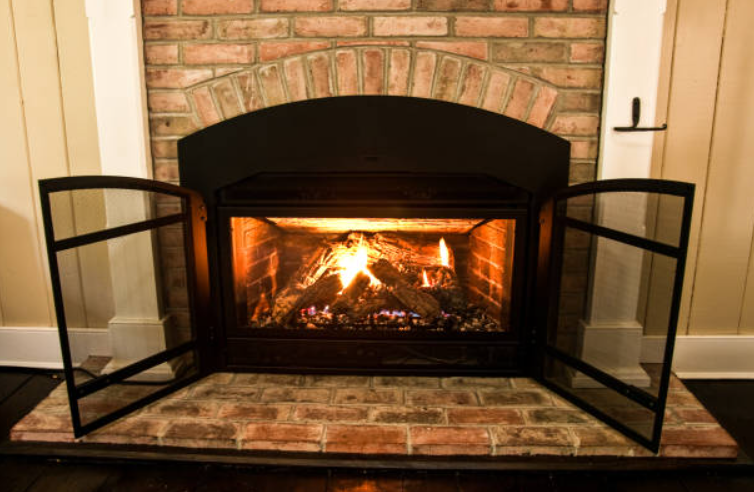If you want to make your home more sustainable and cozier simultaneously, you’ve probably heard about the different types and names of fuel briquettes: Ruf, Nestro, Pini-kay, Nielsen. Let’s find out more about these products for home heating.
Classification
All these names come from the names of companies that produce the most popular presses for the production of Euro-firewood. The technology for making fuel briquettes uses hydraulic presses (RUF, Nestro), mechanical impact (C.F. Nielsen), and extruders (Pini-kay).
All types use the same raw materials, although there were attempts to experiment, for example, bio-bean coffee logs, that are no longer available on the market. Let’s look at each type of fuel briquette in more detail.
Nielsen
“Round” briquettes have the shape of a cylinder with a diameter of 60-90 mm and a length of 50-350 mm. They are produced using high-pressure mechanical or hydraulic presses from dry crushed wood. Does not include any harmful binders. Hardwood heat logs are shaped like regular firewood.
Since equipment for producing cylindrical briquettes is made by dozens of companies, and its quality is very different, you need to approach the purchase carefully. Good round briquettes are usually thick and long (diameter at least 80 mm, length 250-350 mm), while lower quality fuel briquettes, on the contrary, are thinner and shorter (50-60 x 50-150 mm) and much cheaper.
The difference in quality is primarily due to the density of firewood. It is impossible to achieve high density with cheap equipment. That is why cheap briquettes are small. Otherwise, they will fall apart under their weight.
RUF
“Bricks” or fuel briquettes RUF have a rectangular shape and dimensions 65 x 95 x 150 mm. The name comes from the German manufacturer of hydraulic presses, RUF. This Euro firewood is also made from chopped wood (sawdust and chips) without adding any chemicals and has an optimal price-quality ratio.
Only a few European companies manufacture presses of this type. The equipment is simple and reliable, so you need to try hard to get a lousy product with it. Nevertheless, when purchasing fuel briquettes of this type, some features are worth paying attention to.
Pini-Kay
Briquettes of the pini-kay type are irregular polyhedrons with a characteristic dark crust and a hole in the center. Dimensions 50-80 x 200-300 mm. The name comes from the Austrian company of the same name, “Pini&Kay” (now defunct).
During the production process, not only pressing is used, but also surface firing. Because of this, fuel briquettes become more durable and resistant to moisture. This type of briquette can be classified as a “premium” class. Therefore, they tend to be more expensive. Firewood of this type has a beautiful appearance and a slightly higher calorific value compared to others. Due to the hole, pini briquettes have three times the surface area. Therefore, they burn very beautifully. Using pini-kay is the best option for fireplaces, where the aesthetic pleasure of viewing a fire is more important than the cost of heat.
How to Choose
When choosing fuel briquettes, there is only one main criterion: the quality of production. Neither the type of wood nor the shape are of fundamental importance.
All types of firewood have approximately the same humidity and calorific value, so it does not matter whether they are made from coniferous trees, birch, or baobab. A high-quality briquette should be made of sawdust and wood chips, be dense, and break with great effort, and there should not be a lot of sawdust in the package. You must also consider the availability of supermarket logs. Check the assortment and find the type you can easily buy.
How to Use Fuel Briquettes
It is not necessary to immediately fill the fuel chamber with briquettes. It is enough to light a couple of bricks and then lay entirely. There are two methods of igniting this firewood:
- Use tree bark, wood chips, or newspapers.
- With the help of firewood. After good coals remain, you can lay the briquettes.
You can also place fuel briquettes in the firebox in two ways:
- At a short distance from each other. This method is suitable if you need to heat the room quickly. The fire in the stove will be more intense, and accordingly, more heat will be released. But the consumption of fuel briquettes, in this case, will increase.
- If the bricks are placed close to each other and the blower, which ensures air movement, is covered, the combustion will be less intense and longer. This method is well suited for night heating rooms: the temperature will be several degrees lower, but the fuel consumption will be less.
Conclusion
Fuel briquettes are an environmentally friendly and economical replacement for traditional firewood. You can use them as solid fuel for fireplaces, stoves, and solid fuel boilers for heating systems. They burn almost smokelessly, so they are ideal for heating living spaces, tents, greenhouses, and grills.








